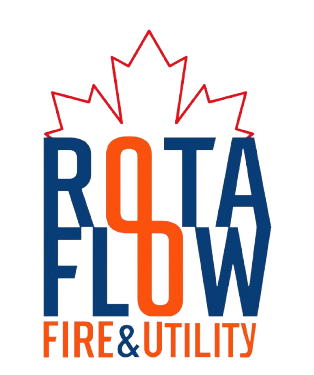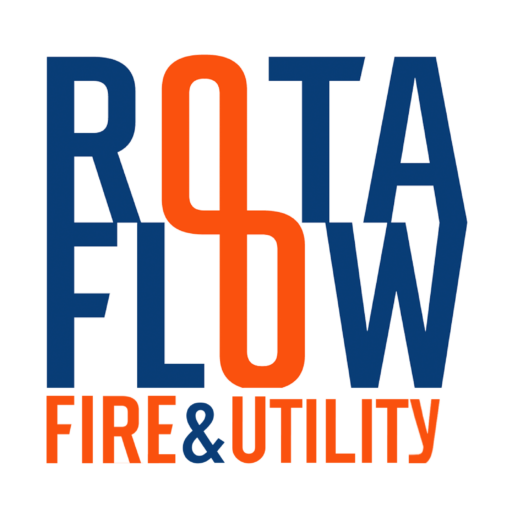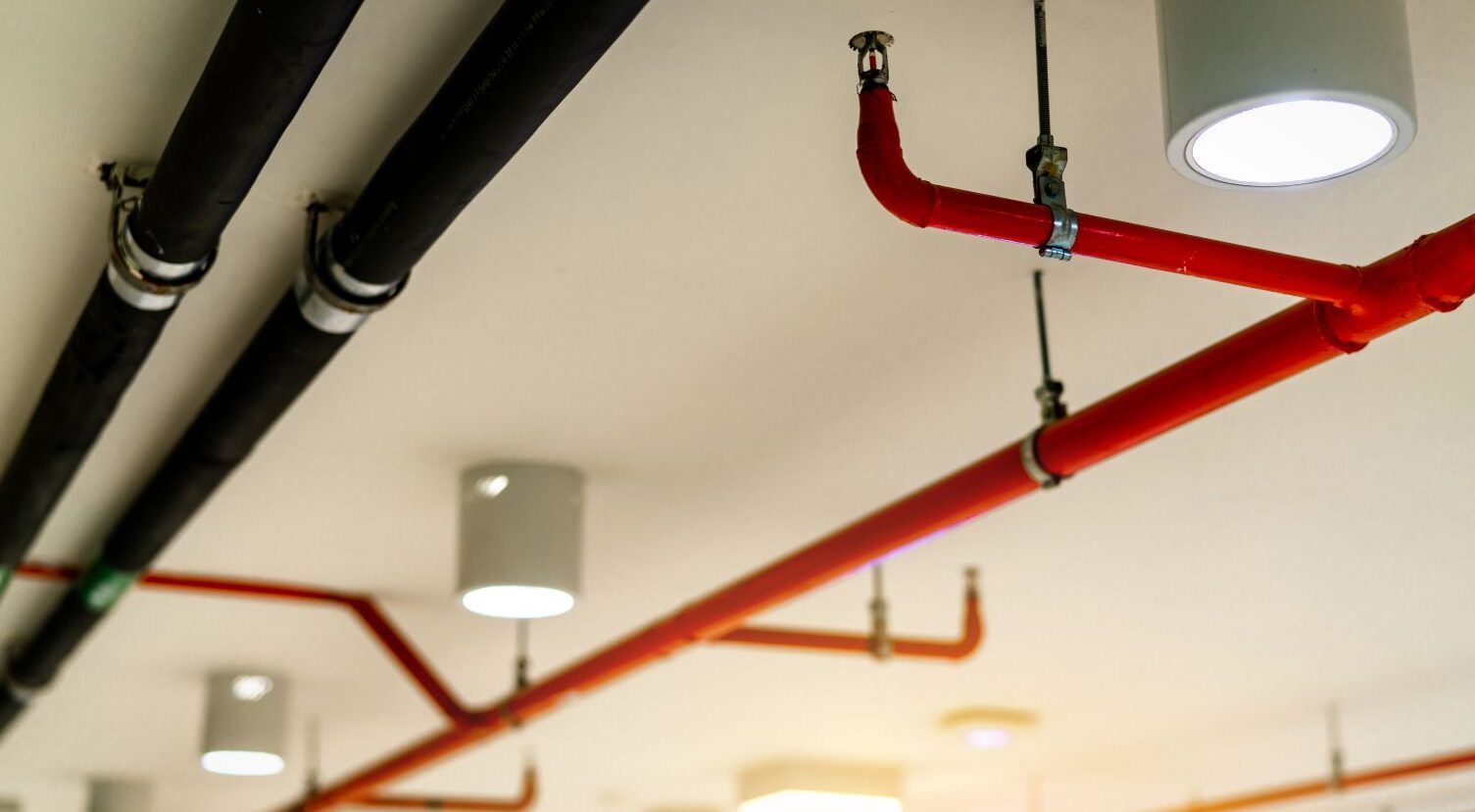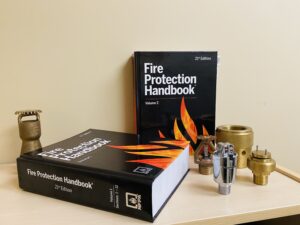INTRODUCTION: In 2010, NFPA launched an investigation into the use of antifreeze in fire sprinkler systems, leading to restrictions on the percentages of glycerin and propylene glycol used. This investigation caused significant changes in the fire sprinkler industry, with new antifreeze systems no longer allowed to be installed unless a listed antifreeze was available. Additionally, a tentative interim amendment (TIA) was created to limit the concentration of the antifreeze mixture in systems and lead to several changes in future editions of NFPA 25. Existing antifreeze systems must be tested for concentration levels annually and maintained at the anticipated minimum temperature for a specific region. NFPA 25 has changed to allow only premixed solutions to be used in existing antifreeze systems, with a sunset date of September 30, 2022.
The concentration of antifreeze solution is now limited to 38% by volume for glycerin and 30% by volume for propylene glycol, and the solution must be tested at multiple points in the system. Requirements for testing existing antifreeze solutions can be found in each edition of NFPA 25. The 2017 edition of NFPA 25 required an antifreeze sign, which required the manufacturer, antifreeze type, brand, concentration, and volume of the system. In 2019, the first listed antifreeze was released, which can protect as low as -25 F and must comply with UL 2901. The sunset date for existing legacy systems is still required and any existing antifreeze solutions must be replaced with a listed solution.
The NFPA 25 committee has voted to allow legacy antifreeze to remain if it meets the percentage requirements of the standard. If no notice of intent to make a motion is submitted, legacy antifreeze will be allowed to remain. If a NITMAM is submitted, it will become a certified amending motion and be debated and voted on at the NFPA conference in June.
THE HOT SEAT OF ANTIFREEZE
It can be difficult to prevent sprinkler systems from freezing in many sections of the nation, particularly in those of buildings without temperature control. According to NFPA, water-filled pipes must be kept at a temperature of at least 40 degrees Fahrenheit. Alternative systems, such as dry pipe or antifreeze systems, must be built if the minimum temperature cannot be maintained.
ANTIFREEZE ISSUES
A kitchen fire in Truckee, California, in 2010 triggered the sprinkler system in an apartment that had an antifreeze system installed. When the sprinkler triggered, the high amount of antifreeze solution in the combination led to an explosion. There have also been other cases where a heavy antifreeze solution mixing led to the fire. A 2010 NFPA examination into antifreeze led to limitations on the amounts of glycerin and propylene glycol that might be used in antifreeze fire sprinkler systems. This would be a good moment to mention that CPVC (orange) sprinkler pipe can only be filled with glycerin. Steel pipe may include both glycol and glycerin, however fire sprinkler systems cannot contain any amount of automobile or marine antifreeze.
CHANGES TO THE STANDARDS
The fire sprinkler business has undergone major transformation as a result of this inquiry. After September 12, 2012, no new antifreeze systems may be installed unless a specified antifreeze was accessible. The installation of a non-listed premixed solution in compliance with NFPA 13, The Standard for the Installation of Water-Based Fire Sprinkler Systems, was approved in ESFR systems as an exemption.
TIA (Tentative Intermediate Adjustment) TO NFPA 25
NFPA 25, The Standard for Inspection, Testing, and Maintenance of Water-Based Fire Sprinkler Systems, had several adjustments as a result of this. A tentative intermediate adjustment (TIA) was made since the 2011 version of NFPA 25 was prepared for publication when the NFPA investigation was finished. A TIA is made to change a particular edition of an NFPA standard when anything has the potential to harm a structure or its systems or result in potential physical injury. Here is a link to the TIAs for 2011.
The TIA restricted the amount of antifreeze mixture that may be used in systems and prompted various adjustments in subsequent NFPA 25 versions.
CHANGES TO NFPA 25
Antifreeze systems currently in use must undergo yearly concentration testing. The systems need to be kept at the predicted lowest temperature for a particular area. The lowest one day mean temperatures across the country are shown on a chart in NFPA 25’s Annex A.
It was standard procedure for contractors to buy concentrate antifreeze and mix the solution on site to the correct amounts before pumping it into the sprinkler system for years, depending on the location where the antifreeze was being put. Another option is to purchase a premixed solution, although they are normally only effective up to a temperature of around -15 F, which is not suitable for many regions of the nation.
The TIA and other amendments to NFPA 25 made it illegal to combine solutions on-site. Current antifreeze systems can only be utilised with premixed liquids. For current antifreeze systems, these modifications also included a sunset date of September 30, 2022. This indicates that the current antifreeze system would need to be altered or updated, and the antifreeze solution would need to be removed, if one of the specified antifreeze solutions was not available by this date. The typical remedy would include converting these systems to dry pipe systems, which would present additional challenges with regard to correctly pitching the pipe or, maybe, heating the spaces—both of which are challenging tasks.
A restriction on the amount of antifreeze that may be used in current systems is one of these adjustments. Antifreeze solution concentrations are currently capped at 38% by volume for glycerin and 30% by volume for propylene glycol. The previous solution must be removed and replaced with a fresh premixed solution if the type of the existing solution cannot be accurately identified. Additionally, it is necessary to test the solution in several systemic locations. For systems that are 150 gallons or fewer, a minimum of two points are needed, and an extra point is needed for every additional 100 gallons.
For instance, the solution would have to be evaluated at a least of four places when evaluating a 300-gallon system. The first 150 gallons require two, the next 100 gallons require one, and the final 50 gallons require one. The following sections of each edition of NFPA 25 include the requirements for testing current antifreeze solutions.
2011- TIA’s
Section 5.3.4 for 2014
Section 5.3.3 of 2017
Section 5.3.4 of 2020
Also take notice that an antifreeze sign is a new requirement in the 2017 version of NFPA 25. The manufacturer’s name, antifreeze type, brand, volume concentration, and system volume must all be listed on the sign.
LISTED VS LEGACY ANTIFREEZE
The initial listed antifreeze was made available in 2019. Antifreeze products are currently available on the market that are listed. This is undoubtedly an advance over the traditional antifreeze, which could only be used with particular types of pipe materials. They can be used in CPVC and steel pipelines. The above antifreeze products can now provide protection down to -25 F.
The newly classified antifreeze solutions must adhere to UL 2901, which is what sets them apart from vintage antifreeze. In a nutshell, Underwriters Laboratory establishes the requirements for performance, quality, and safety. Any product that wants to be “listed” must meet rigorous testing requirements. It is necessary for antifreeze solutions to meet UL 2901 specifications.
For existing legacy (glycerin and glycol) systems, the sunset date of September 30, 2022, still applies, and any existing antifreeze solutions must be replaced with a specified antifreeze. The manufacturer’s instructions must be followed while making these adjustments since there may be some difficulties in substituting the current antifreeze solutions with one of the ones specified. There are currently two manufacturers having listed antifreeze products on the market.
(Lubrizol) Freezemaster
Tyco’s LFP Antifreeze
2023 EDITION OF NFPA 25
The NFPA 25 committee decided to keep legacy antifreeze as long as it complies with the percentage criteria currently mentioned in the standard in the second draught for the 2023 version. It is also suggested that, should the solution fail for any reason during inspection, mentioned alternatives must be used in its stead. In essence, if the present solution passes the standards’ criteria, it may stay in place. However, for both new and existing antifreeze systems, the legacy antifreeze cannot be added or renewed.
In the event that no notice of intent to make a move is made (NITMAM), legacy antifreeze will be permitted to continue as previously specified. Once we know if an NITMAM was presented, it will change into a certified amending motion (CAM), which will then be discussed and decided upon at the NFPA conference in June 2023.
Courtesy: Vince Powers, ITM Specialist for the National Fire Sprinkler A, wrote this TechNotes version.



